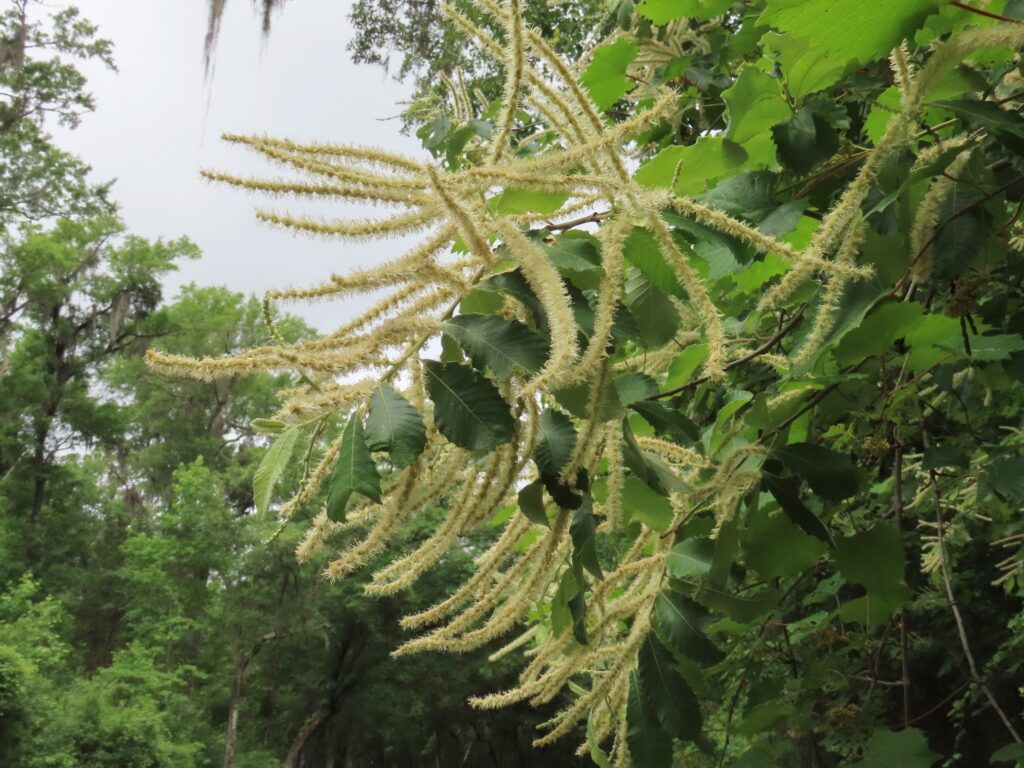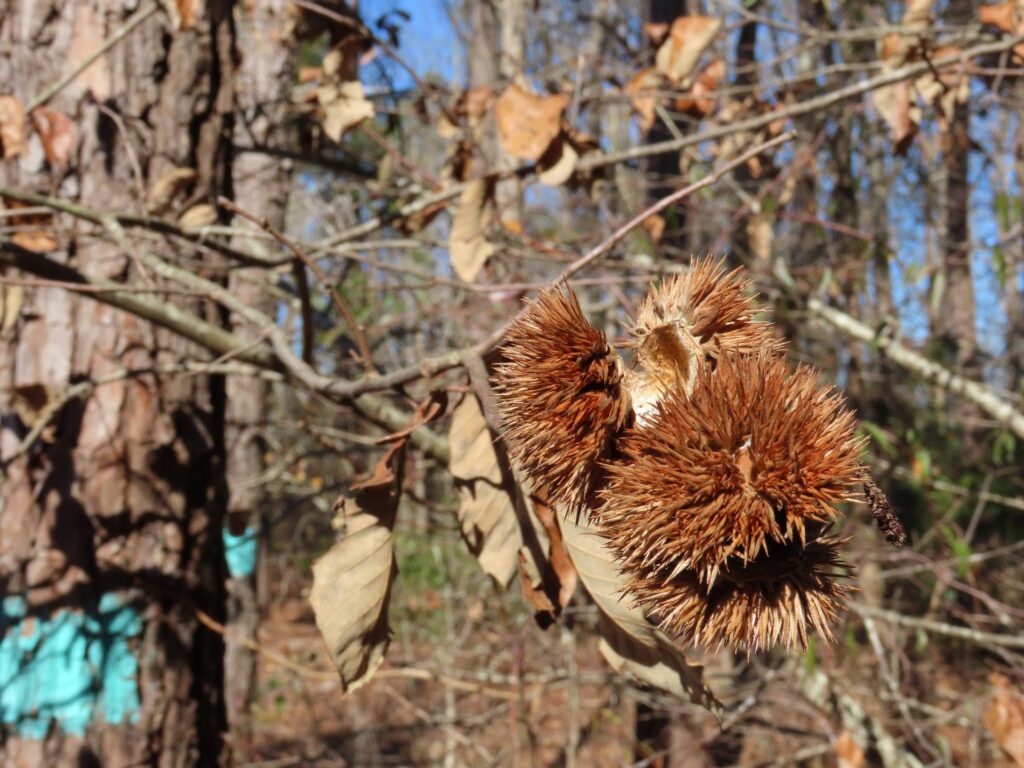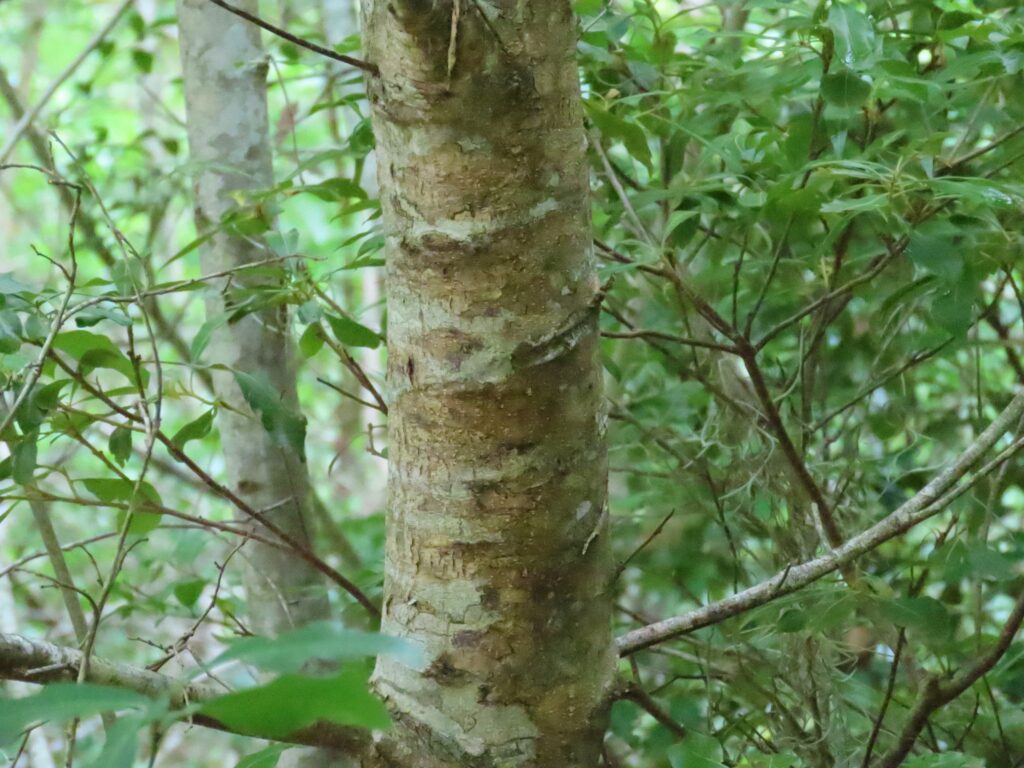




This week for Flora and Fauna Friday, we have our compact coastal chestnut, the American Chinquapin (Castanea pumila).
Chinquapin, also spelled Chinkapin, is a large shrub, bordering on small tree, found across the Southeast. Here on the coast, it’s most commonly found in uplands on high sandy soils. Chinquapin is typically found in clearings or roadsides within oak-hickory forests and pine forests and can tolerate intermittent fire. It’s by no means a common plant in the modern day but can be reliably be found, albeit few and far between, in the right habitats. Chinquapin leaves are large, elliptical, toothed along the margin, and are coated in a silvery-bronze sheen of hairs underneath. Its growth form is shrubby and gnarled. The best way to spot a Chinquapin is by its flowers and the best time for that is mid-May. Chinquapins produce a profusion of cream-white fuzzy flower spikes from their twigs in the middle of Spring. These flowers are hard to miss and attract droves of pollinators to buzz about the bushes. Flowers require cross-pollination with another Chinquapin to mature. Once pollinated, the flowers can set seed and spiney fruits begin to appear. These fruits grow and harden into hedgehog inspired globes of sharp spines. Within this outer husk is cradled a single Chinquapin nut. The Chinquapin is a native species of chestnut and their nut has many of the characteristic qualities of chestnuts. However it is small, round, and nearly black towards the tip, which set the nut apart. They’re edible and quite flavorful as well. However, I’d recommend against foraging for Chinquapins as they’re hard to find, not very productive, and in need of some conservation care.
You may have heard about the American Chestnut (C. dentata), which was a massive hardwood tree that once dominated the Appalachian mountain range, defined ecosystems, and sustained millions of turkeys, deer, livestock, and people with its reliable annual production of nuts. They weren’t found here on the coastal plain but their diminutive cousin, the Chinquapin, was and still is. At the beginning of the 1900s a parasitic fungus called Chestnut Blight (Cryphonectria parasitica) made its way to North America, likely through the transplantation of Chinese Chestnut (C. mollissima) trees into the United States. The fungus attacks the trunk of the tree, infecting its vasculature and eventually girdling the tree. However, it rarely infects the root system. Both the Chinquapin and the American Chestnut were susceptible to this fungal disease. Chinquapins had a slight natural resistance to the blight. This coupled with their small size and adaptations to fire allowed them to persevere, but not unscathed. Their populations are drastically reduced from what they were historically. American Chestnut, on the other hand, was especially vulnerable and has been driven nearly into extinction. This has had dramatic ecological and economic impacts across the Appalachians. However, hope is not lost! A few American Chestnuts still survive to this day. The American Chestnut Foundation is actively working to restore the American Chestnut back to its native range. They’ve created several promising blight resistant cultivars they hope to begin planting into the wild in the coming decades.